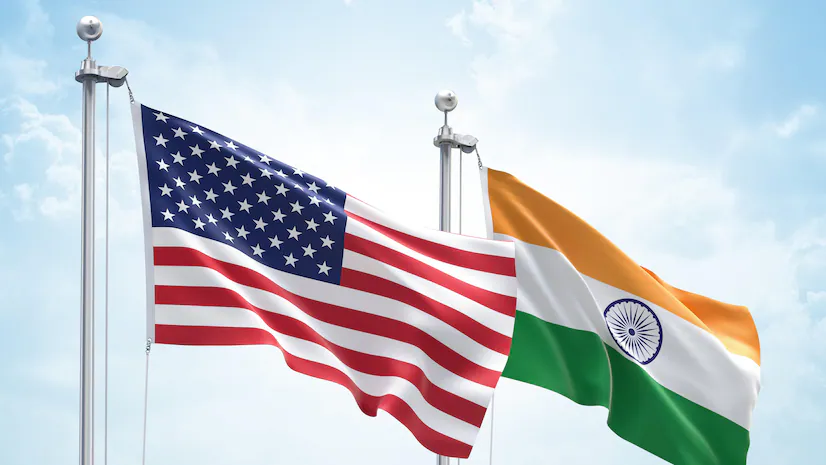Understanding Tariffs and Their Impact A tariff is a tax imposed by a country on imported goods. Governments use tariffs to protect domestic industries, generate revenue, or retaliate against unfair trade practices. However, high tariffs can disrupt global trade, increase prices for consumers, and lead to economic instability.
Introduction
The global trade landscape is witnessing a significant transformation with the return of tariff-driven policies. Former US President Donald Trump has announced plans to impose tariffs on several key trade partners, including the European Union (EU), China, Brazil, India, Mexico, and Canada. Citing an "unfair" trade environment, Trump’s move is poised to disrupt global commerce and raise concerns about economic stability. While these policies aim to bolster US industries, they also bring risks of retaliatory measures, trade wars, and economic instability.
For India, these tariffs pose critical challenges, affecting economic relations with the US, inflation levels, and overall economic growth. This post delves into the implications of these tariff policies, their impact on India, and the strategic countermeasures India can adopt to mitigate these challenges.
Understanding the Tariff Fallout: A Global Perspective
Trump’s tariff policies represent a departure from the traditional US stance on free trade. While protectionism aims to shield domestic industries, it often triggers countermeasures from other nations, leading to an escalation of trade barriers. The ripple effects of such policies can be observed in various economic indicators:
- Global Trade Policy Uncertainty (TPU) Index: Historically, tariff impositions have led to increased market volatility, as seen during the 2018 US-China trade war. A recent spike in TPU around January 2025 suggests renewed market anxieties.
- Stock Market Reactions: While US markets remain resilient, European markets have shown signs of underperformance due to investor concerns about trade restrictions.
- Currency Fluctuations: A weakening US dollar reflects broader apprehensions regarding global trade dynamics.
Impact on India: Economic and Trade Implications
1. Straining India-US Trade Relations
India and the US have enjoyed a growing economic partnership, particularly in sectors like IT, pharmaceuticals, and textiles. However, Trump’s tariff policies threaten to strain this relationship. Historically, India has imposed tariffs to protect domestic industries, a practice Trump has criticized. Increased US tariffs on Indian exports could lead to:
- Higher costs for Indian exporters, reducing competitiveness in the US market.
- Pressure to lower Indian tariffs on US goods, potentially harming local industries.
- A shift in US trade policy, pushing for bilateral negotiations with stringent conditions.
2. Inflationary Pressures in India
Trade restrictions often lead to price hikes in both exporting and importing countries. If the US imposes tariffs on Indian goods, Indian exporters may raise domestic prices to offset losses, leading to:
- Rising costs in essential sectors like pharmaceuticals and textiles.
- Higher inflation, potentially crossing the 7% mark, further straining household budgets.
- Costlier imports of US goods, such as agricultural products and technology.
3. Economic Challenges for the Middle Class
India’s middle class, a key driver of consumption, is particularly vulnerable to economic disruptions caused by trade uncertainties:
- Declining export revenues could lead to job losses in sectors like IT and manufacturing.
- A weakening rupee could increase import costs, reducing purchasing power.
- Reduced foreign direct investment (FDI) due to trade policy uncertainty could limit economic growth.
4. Long-Term Implications and Shifts in Global Trade Dynamics
As trade tensions escalate, India may need to recalibrate its trade policies to remain competitive:
- Diversification of export markets, focusing on ASEAN, the EU, and African nations.
- Accelerating domestic manufacturing under the ‘Make in India’ initiative.
- Increased competition from emerging economies like Vietnam and Bangladesh, which may attract US buyers.
India’s Counter-Reaction: Mitigation Strategies
To navigate the challenges posed by US tariffs, India must adopt a multi-faceted approach:
1. Diversifying Export Markets
- Strengthen trade agreements with the EU, ASEAN, and African countries to reduce dependency on the US.
- Focus on expanding trade partnerships through new Free Trade Agreements (FTAs).
2. Boosting Domestic Manufacturing
- Enhance policies under the Production Linked Incentive (PLI) scheme to promote self-reliance.
- Reduce dependency on imports by increasing domestic production in key sectors.
3. Engaging in Diplomatic Trade Negotiations
- Leverage India’s role as a strategic partner to negotiate exemptions or reduced tariffs for crucial sectors.
- Highlight mutual trade benefits to secure favorable trade terms.
4. Managing Inflation and Currency Stability
- The Reserve Bank of India (RBI) may tighten monetary policies to curb inflation.
- Government subsidies on essential goods could shield consumers from rising costs.
5. Promoting Renewable Energy and Self-Reliance
- Investing in green energy to reduce reliance on imported fossil fuels.
- Encouraging domestic technology production to mitigate tariff-related disruptions.
Conclusion:
Trump’s tariff policies signal a transformative moment in the global trade order, with substantial implications for India. While immediate concerns include inflation, strained trade relations, and economic pressure on the middle class, long-term challenges revolve around India’s positioning in global markets. By focusing on export diversification, domestic manufacturing, and strategic negotiations, India can mitigate the adverse effects of these tariffs and secure a stable economic future. The country’s ability to adapt and innovate will be pivotal in navigating these turbulent times, ensuring economic resilience and growth for its citizens.

 Sangram Keshari
Sangram Keshari









